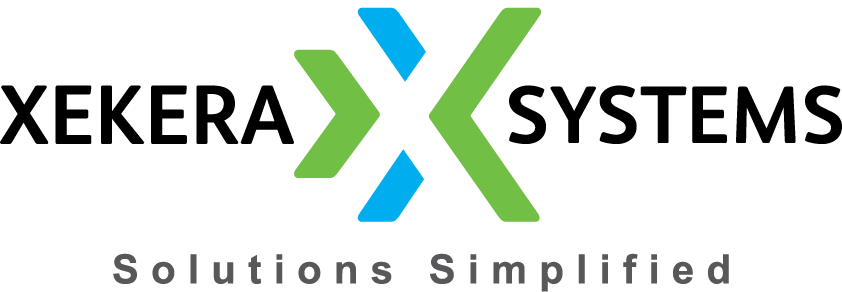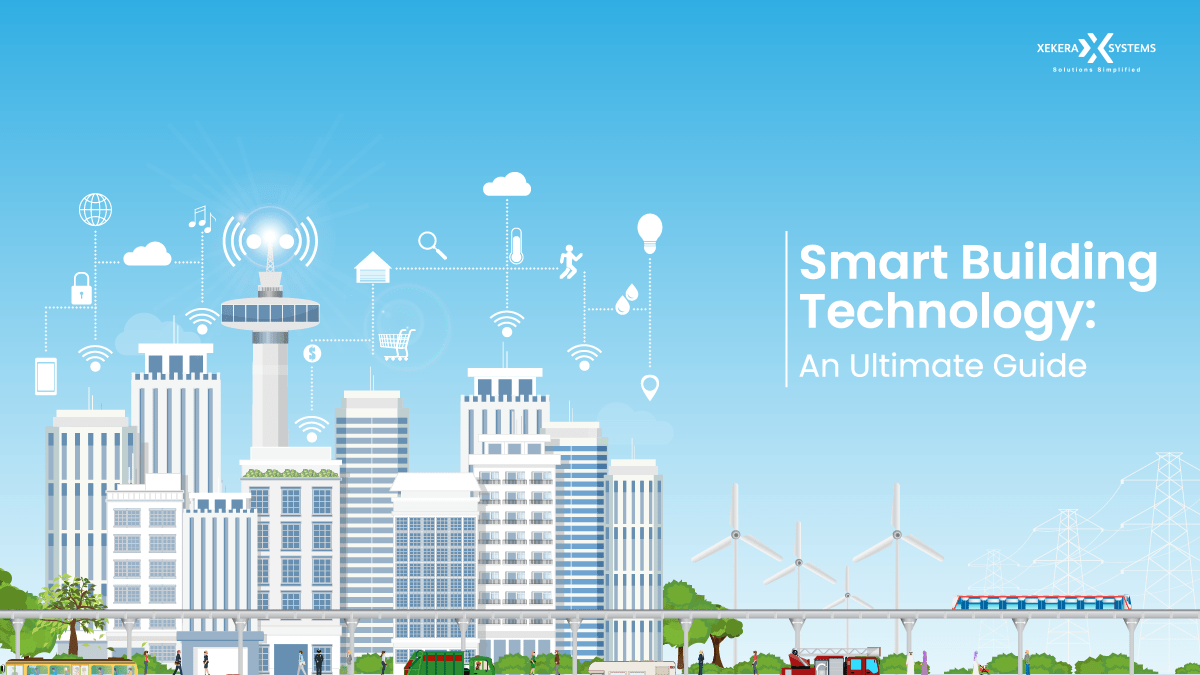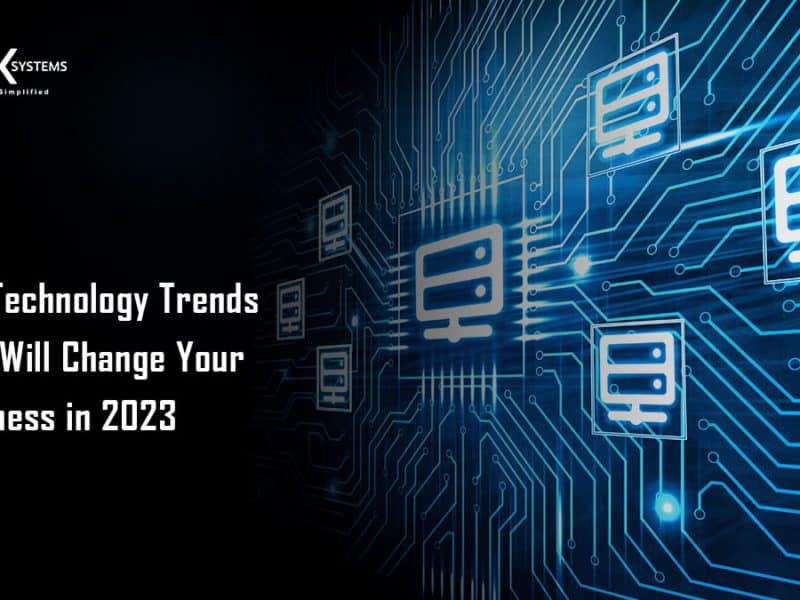Author’s Note: Paresh Sagar provides a fascinating piece that goes into detail on smart building technology. Additionally, it discusses many use cases and current instances that demonstrate how smart infrastructure will become the new standard in the future years. From this point forward, if you want to learn more about IoT for smart buildings, read the article in its entirety or get in touch with Xekera Systems for top-tier IoT development services.
Do you believe that offering people opulent structures with ample space, beautiful interiors, the ability to stay warm, and other amenities is sufficient in the digital age?

Well, the answer is unequivocally no!
The need for IoT integration in construction is present today and in the future. The emerging requirement of building owners, facilities managers, and tenants is for such smart infrastructure.
Just think of how much money you could save on your electricity costs by strategically using your HVAC system, or by controlling the entire building from your phone.
That sounds lucrative and compelling, doesn’t it?
In fact, it is anticipated that the size of the worldwide smart building market would increase, growing at a CAGR of 21.6% from 2021 to 2028 to reach USD 265.37 billion.
Utilizing smart building technology is primarily intended to cut costs and increase a building’s lifespan.
We can even assert that smart buildings are a totally distinct species that will balance commercial potential in the near future.
So let’s start the IoT era of smart buildings. Additionally, save this page to your favorites because you may want to refer to it frequently to improve new technologies in your facilities.
What is Smart Building Technology? – A Brief Tech Intro
Technically speaking, “smart building technology” is a combination of hardware and software that helps to simplify operation by automating tasks, providing weather alerts, being sensitive to occupant needs, and other functions. Keep in mind that the heart of every smart building is the Internet of Things.
In order for a building to be considered “smart,” IoT integration must be done holistically, using embedded systems, product engineering, and one unified network.
Alternatively, smart buildings IoT stands for embedded tools, which enable you to analyze and improve the operation of your building.
The IoT-enabled smart building solution gives you a unique perspective on the everyday items all around you. everything from pipes to furniture, air quality monitoring to lighting turnoff, elevators to windows and doors.
These items are transformed into networked embedded devices by intelligent building technology using IoT sensors.
In a nutshell, IoT smart buildings provide you a nine-yard view of the health of any structure, whether it’s a house, office, or commercial space. You now have a general idea of what a smart building management system looks like.
How Do Smart Buildings Work?
In order for an IoT building to function, data must first be gathered from the surrounding environment and then converted into real actions using various embedded technologies.
Several key elements on which a smart building system operates include;
A single data hub: A central dashboard is available for real-time data tracking. On one screen, you may access all the information whenever and wherever you are.
The heart of smart building technology is at the product engineering stage. Development of embedded systems, firmware, and middleware takes place here.
AI-Driven Insights: The real-time data that is gathered from the sensors is linked to the AI algorithms, which in turn gives you actionable insights to boost the efficiency of your building.
Smart Sensors: Your IoT app development firm constructed sensors that are permanently affixed to your structure. All you have to do is place them throughout your structure to gather data on things like air quality, occupancy, foot traffic, weather, virus danger, and other variables.
Open Protocols: This enables communication between cloud-hosted systems and Internet of Things (IoT) gadgets and the BMS utilized in a shared system. With IoT-connected devices, open protocols let you design the administration interface. From now on, you can access a variety of tools from proprietary protocols depending on your needs.
Building Automation: As needed, the building automation is started by developing the hardware, software, and firmware. It upholds some of the ideal IoT smart building practices.
The example given below will help you understand how smart buildings operate. The corporate office building used as an example shows how automation is used based on employee behavior.
Smart Building Technology – Use Cases & Opportunities
The modern homeowner’s dream is to build a smart house or office. The fundamental issue, however, is the question of what advantages come with smart infrastructure.
Examine the prospects for improving your infrastructure and use cases for smart buildings.
Smart Offices:
With the advent of smart building technologies, workplaces like the Capital Tower in Singapore and Edge in the Netherlands’ capital city of Amsterdam have experienced enormous growth.
Their comment on smart buildings indicates that everything about the building now runs much more smoothly. Employee contentment and productivity have risen as a result. For instance, the Edge uses a smart building software to gather routine information from each user and then books the workplace in accordance with those timetables.
In order to save time and increase productivity, the office also needs smart parking. You don’t need to find a parking spot while using a smart parking system; all it takes is a few phone touches to access a parking lot.
Smart Home:
Imagine arriving home to discover the air conditioning has already cooled the room. Life is now lot more flexible and accessible than it ever was thanks to smart homes.
The AI program automates many tasks in your house, including lighting, air quality monitoring, temperature control, and other tasks, by detecting your everyday actions.
IoT-enabled technologies can help you make your house smarter. Want to learn more about smart home automation? Visit the Smart Home case study if you like, or let’s end the call.
DO YOU KNOW?
“Modernizing the facilities management process may make it a strategic rather than an afterthought for business operations. This is especially true when integrated with a Service Automation platform.”
Smart Data Centers:
IoT for data center buildings places a strong emphasis on things like energy efficiency, SOS notifications, physical security, and fire safety. For instance, the Interxion Data Center in Vienna, Austria, secures its data center 24/7/365 using a smart building system.
They can automate many manual operations thanks to the smart infrastructure, which boosts productivity. They must oversee things like visitor management, perimeter security, intrusion detection, and energy efficiency, among other things.
In addition to everything else, smart data centers have smart surveillance that can monitor security, identify fires inside buildings, and communicate building operation metrics via a real-time dashboard.
Why Should You Opt For Smart Building? – Know The Core Benefits
Concerned about the immense benefits that smart building technology can provide for you? See the sections on the advantages of smart building services.
Know Your Building Better:
The use of smart building technologies provides thorough insights into your structures. Everything is covered, including illumination, building health, pipe health, and much more. In a nutshell, having a better understanding of your building enables you to exert more control over it.
Bring Down Costs:
IoT building automation is a one-time investment that will ultimately result in significant cost savings. The cost is lowered significantly when considering energy efficiency, predictive maintenance, and reduced staffing.
Drive Sustainability:
Do you know that 39% of global carbon emissions come from the built environment? Intelligent buildings can help to reduce this. It enables climate control by sending you ongoing notifications when the weather changes. By 2050, we can achieve the climate target and have zero carbon emissions.
Looking for Smart Infrastructure Solutions?
For you, Xekera Systems has already constructed it! Yes, contact our IT specialists to incorporate IoT for construction. Want to learn more about smart infrastructure?
360-View Facility Management:
The benefits of IoT for smart building automation go beyond standard features like HVAC and lighting to give management an unmatched view of their structures. Everything is covered under one roof, regardless of whether the issue is a tank leak, waste management, pipe failure, or equipment issues.
Secure Remote Connectivity:
The coordination between numerous linked devices also improves as IoT for buildings grows. To prevent any cyberattacks, it is essential to provide it with total protection. Remote connectivity guarantees the security of the equipment so that other team members or contractors may easily monitor things from a distance.
Meet Xekera Systems To Procure Your Smart Building Solution
Product engineering services are something that Xekera Systems has years of experience and competence in. Here are a few factors you should select us as your IoT development partner:
- Device Connectivity & Engineering
- Cloud Platform Development
- End-to-end IoT solution
- Hardware Design & Development Engineering
- Embedded Software Development
- Product Prototyping & Testing Services
- Pre-compliance & Certification
- Technical Feasibility
In addition to these services, we also manufacture our own goods, such as Smart Parking, Smart Infrastructure, and Smart Helmet.
Conclusion
The rationale, use cases, and overview of smart building technologies are now complete. We’re confident that by this point you have a clear understanding of how and why smart buildings are important in both the present and the future.
Buildings with smart management have happier residents and a higher level of productivity. We must thus conclude that now is the perfect time for you to integrate IoT with your structure.
The focus needs to change to the Smarter World. Let’s put an end to the request for more dialogue.



